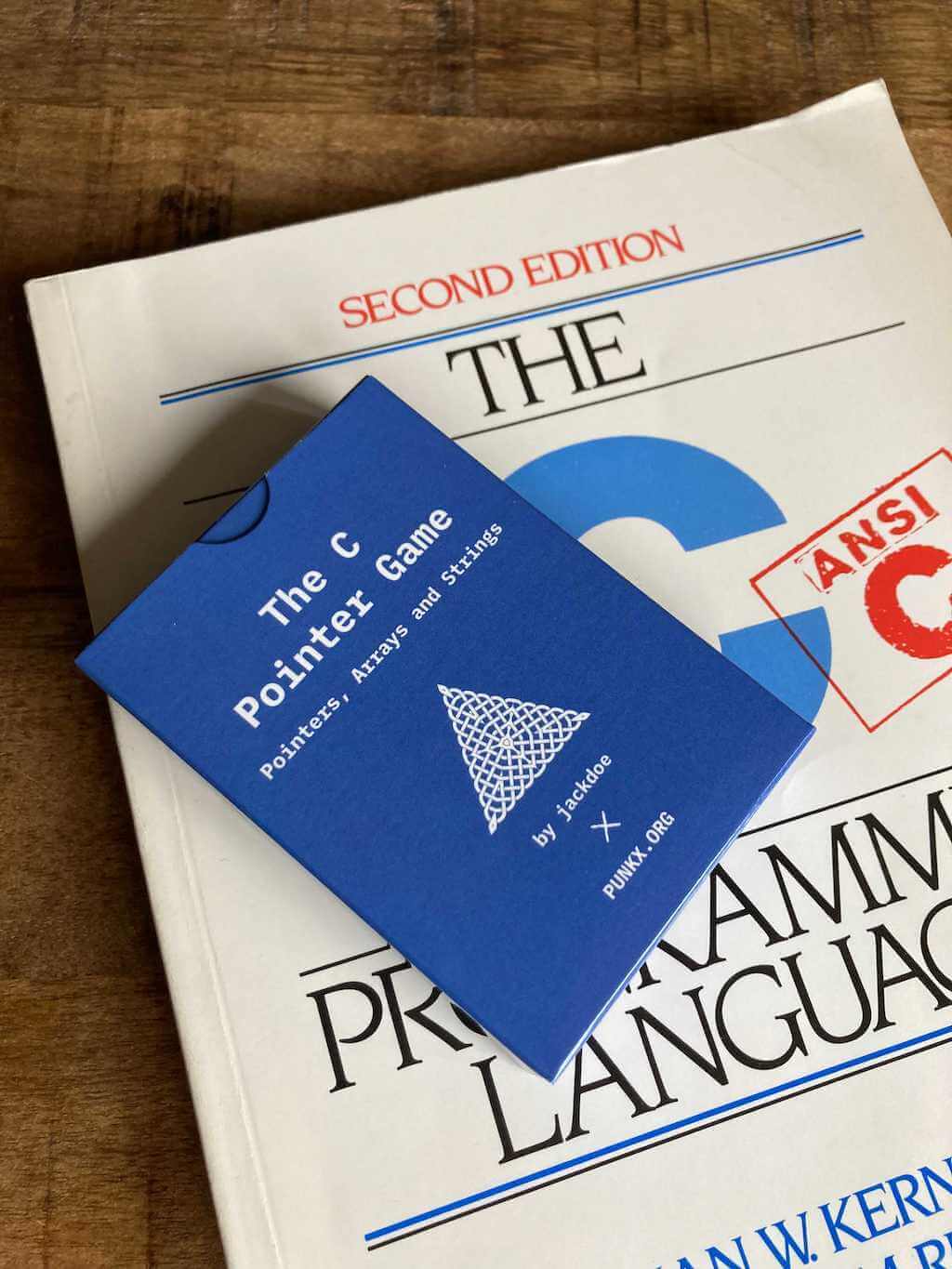 The C Pointer Game - Pointers, Arrays and Strings, a game to teach kids to look at the computer memory and understand references and values
The C Pointer Game - Pointers, Arrays and Strings, a game to teach kids to look at the computer memory and understand references and values



I made this game so I can improve my daughter's ability to read and debug code. Each card has something interesting to teach. The game is simple, pick a card, read the code, throw a 20 sided dice (wherever you see the ⚂ symbol) to get a value and evaluate the code together with your kid.
 The C Pointer Game - Pointers, Arrays and Strings, a game to teach kids to look at the computer memory and understand references and values
The C Pointer Game - Pointers, Arrays and Strings, a game to teach kids to look at the computer memory and understand references and values
 4917, a game to teach kids machine code and how the CPU works with memory and registers
4917, a game to teach kids machine code and how the CPU works with memory and registers
 The Unix Pipes Game, a game to teach kids to use basic UNIX commands:
The Unix Pipes Game, a game to teach kids to use basic UNIX commands: cat, sort, grep, head, tail, wc, uniq
 The Unix Pipes Game - Process Substitution, an expansion of the Unix Pipes Game to teach process substitution and also:
The Unix Pipes Game - Process Substitution, an expansion of the Unix Pipes Game to teach process substitution and also: paste, tr, cut, bc
 RunLength Encoding for Kids, small cards "game" to explain runlength encoding
RunLength Encoding for Kids, small cards "game" to explain runlength encoding
 PUNK0 - The Function Composition Card Game, use cards to manipulate a list and use its values to win the game
PUNK0 - The Function Composition Card Game, use cards to manipulate a list and use its values to win the game
PROJEKT: OVERFLOW, RISCV assembler boardgame
 Programming for kids, a log of my journey of teaching my daughter how to code
Programming for kids, a log of my journey of teaching my daughter how to code
Example cards:

As you can see they cover all kinds of topics, some are more advanced, some are quite trivial, but the key is you take a dice and pen and paper and follow the code together.
PS: the back and front of the cover is an ascii string.